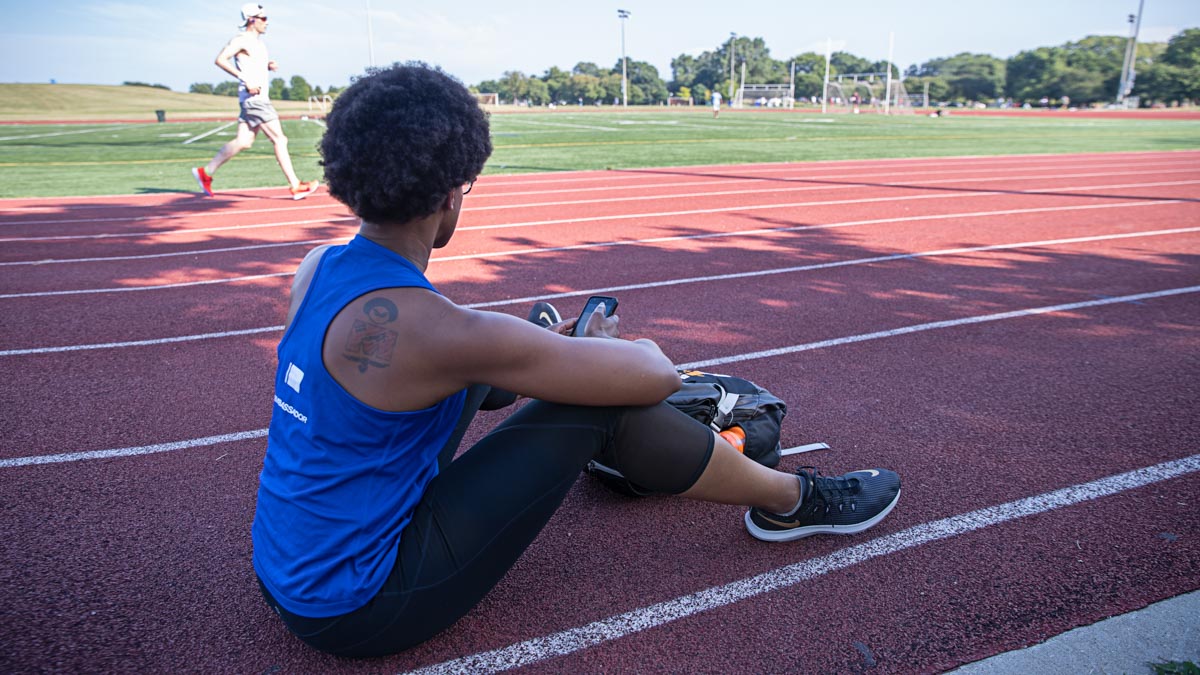Most coaches understand the principles of overtraining syndrome when an athlete experiences load increases faster than they can recover from it. Overtraining can be relatively sudden (acute) or gradual (chronic). By the end of a season, a large proportion of athletes may find themselves on the chronic end of the spectrum of being overtrained.
Thinking about the factors that go into this fatigue and how it might evolve over the course of the season allows coaches to make decisions about when an athlete needs to end their season and how long they need to take some needed time off.
If your athlete has raced an entire triathlon season, which here in Europe means an athlete can race from the start of April until mid to late Oct., there’s plenty of opportunity to go too deep. Many athletes finish the season on a spectrum between feeling a bit flat to suffering from low energy availability. Prescribing the amount of time off training is a judgment call between coach, athlete and potentially their medical team with help from some data.
At the end of a season, the first thing a coach must do is determine if their athlete has made it to the end of the year healthy. This includes aspects of health like energy levels, psychological health and motivation, as well as musculoskeletal factors. There’s no point in thinking about training readiness until your athlete is healthy.
Once this is done, it’s time to think about the return to training. In the past, this would have been done almost entirely on the subjective feelings of an athlete. Now, we have access to a wealth of data from blood, heart rate variability (HRV), heart rate and other biomesurements in addition to those psychological feelings to inform coaching decisions.
Blood tests
One common way for athletes to determine their readiness is by getting blood tests that look for various biomarkers that may be responsible for the fatigue an athlete feels at the end of a season or after a big race. There are several blood testing labs available without physician orders required. There can be an overlap between a number of medical conditions and being overtrained.
It’s widely known that iron deficiency in women is a problem that worsens with age and that the symptoms of iron deficiency overlap with those of overtraining. Low ferritin levels are a sign of iron deficiency anemia (the most common type of anemia) and can be tested with a simple full blood count test. The symptoms of iron deficiency anemia can include tiredness, lack of energy, shortness of breath and more.
Low energy availability (often known as RED-S) can’t be diagnosed with a blood test alone but can be used to track the status of the condition. The symptoms of RED-S include disrupted reproductive health, bone density and health problems, a reduction in immune function and a reduction in metabolism. Consult your doctor for more information on RED-S and how and when to use a blood testing protocol to diagnose it.
Blood test providers like Forth Edge allow athletes to select biomarkers themselves, creating a custom blood panel for their specific circumstances. A 60-year-old female might wish to track different biomarkers from those of a 24-year-old male, obviously. Other providers are available but choosing a provider whereby tests are customizable and inexpensive enough to do periodically would be the best advice.
Determining which specific markers to track depends heavily on the athlete. Knowing what values are within normal ranges requires some medical knowledge and understanding of physiology impacts. Monitoring values over time is relatively widely practiced, especially amongst elite athlete-coach teams.
Keep in mind the results of blood tests should form part of a broader picture for an athlete. Simply testing and focusing on a result is certainly no magic bullet.
Heart Rate Variability
HRV is, essentially, the difference in time between each heartbeat. This time difference can give us clues into the current physiological state of an athlete, one of which is chronic fatigue. Generally speaking, HRV should build part of a larger picture of the status of an athlete. However, dips in HRV (thus, an increase in the regularity with which your heart beats) can indicate that something isn’t quite right. HRV is not only impacted by training stress, making it a valuable tool beyond evaluating overtraining.
Many HRV apps and trackers integrate with TrainingPeaks, and this feature makes it easier to track with other metrics. My personal favorite is hrv4training, which can be used without a watch and without relying on, often unreliable, optical wrist heart rate sensors. HRV is something that should be tracked for a fairly long time. I suggest starting with three months, but some coaches document longer before using it to inform decision-making in training.
For the best use case, establishing a complete baseline HRV earlier in the season is required. The longer HRV is documented, the more valuable it is for managing the training load. It’s widely established that reduced HRV can predict fatigue severity in individuals with chronic fatigue syndrome, so it’s not unreasonable to suggest that reduced HRV might be a marker of chronic fatigue caused by training and racing. Piling more training on is not wise until the measurements return to baseline.
As well as HRV, pure heart rate values can be monitored to build a picture of an athlete’s readiness to return to training. If an athlete is getting tired toward the end of a season, they may find that their extreme heart rate values (lowest and highest) will increasingly come closer together.
Similarly to HRV, knowing an athlete’s baseline values means a coach has a clear picture of ‘normal.’ Once values have returned to normal, an athlete is more likely to be ready to get back into productive training.
Psychological Readiness
It’s safe to assume that if an athlete’s mind isn’t ready and willing to get back to work training, the work will not be productive. Sports psychology is of greater importance than we’ve understood previously.
A study published in the British Journal of Sports Medicine examined the issue of psychological staleness. Unsurprisingly, it found that the mood disturbances of swimmers decreased as the training load decreased. Monitoring your athlete’s mood should definitely inform decisions as to whether they’re ready to start training again.
Returning to training, particularly running, after a break is considered a high-risk period for injury by many coaches. A study done on the psychological readiness to return to sport after injury found that athletes who were deemed psychologically less ready to resume training were more likely to be re-injured.
An athlete’s readiness to resume training ought to coincide with some restlessness and talk of new goals. As always, though, the return should be gradual and focus on parts of training this athlete enjoys in order to build a good association between training and the athlete.
Conclusion
As with all metric tracking, the first step is to obtain reliable measurements, and the second is to establish a reliable baseline with each individual athlete. Taking a full-length offseason and not being afraid to de-train a little will lead to your athlete freshening up physically and mentally while ensuring they are healthy when starting winter training for the coming season.
By monitoring some, or all, of an athlete’s blood values, heart rate variability, resting heart rate and psychological readiness, a coach can use a mixture of subjective and objective data to make an informed decision on whether their athlete is ready to start training again. The amount of time taken off varies between athletes. Some professionals that I know take no time, while others take up to six weeks off structured training.
Most athletes remain relatively active during their offseason but having a coach to guide mind and body to be ready to focus on training again properly will lead to better results in the coming season.
References
Friedman, A. et al. (2012, Dec.) Iron deficiency anemia in women across the lifespan. Retrieved from https://pubmed.ncbi.nlm.nih.gov/23210492/
Dudgeon, E. (2019, April) Relative energy deficiency in sport (RED-S): recognition and next steps. Retrieved from https://blogs.bmj.com/bjsm/2019/04/22/relative-energy-deficiency-in-sport-red-s-recognition-and-next-steps/
Escorihuela, RM. (2020, Jan) Reduced heart rate variability predicts fatigue severity in individuals with chronic fatigue syndrome/myalgic encephalomyelitis. Retrieved from https://translational-medicine.biomedcentral.com/articles/10.1186/s12967-019-02184-z
Morgan, WP, et al. (1987, Sept.) Psychological monitoring of overtraining and staleness. Retrieved from https://bjsm.bmj.com/content/21/3/107.short









